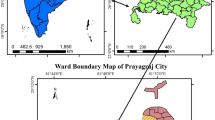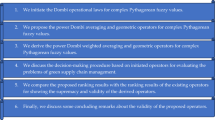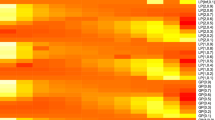Abstract
Due to its vital role in healthcare system, performance evaluation of hospitals is indispensable. In addition, hospitals try to achieve desired and efficient conditions by careful planning based on their present facilities. Several studies have been conducted on hospital evaluation, but nearly none of them has taken into consideration the difference in the nature of performance in respect of hospitals’ managerial construction, funding, and type of services provided by them. Furthermore, hospitals’ outputs have not been estimated in respect of cause and effect relationships between inputs and outputs for achieving efficient conditions. In the present study, first, a new approach for hospital evaluation is presented according to the differences in the nature of their performances while categorized in groups. Then, optimal outputs for each hospital in its own group are dealt with using results obtained from multi-group data envelopment analysis and the method of fuzzy cognitive map. The activation Hebbian learning (AHL) algorithm is adapted to the concept of efficiency and is conducted to estimate the outputs of inefficient hospitals. In the present study, 27 hospitals located in the provincial capitals in northwest of Iran are categorized in four groups including general governmental hospitals, specialty governmental hospitals, private hospitals, and social security hospitals. Afterward, optimal outputs are estimated for the inefficient hospitals by using the proposed modified AHL algorithm. The results indicate that when the hospitals have been evaluated in groups, efficiency scores of hospitals have changed. Also, given the cause and effect relationships between inputs and outputs in each group can help to decision and policy makers to estimate the optimal outputs that have caused inefficient hospitals become efficient.






Similar content being viewed by others
References
Charnes A, Cooper WW, Rhodes E (1981) Evaluating program and managerial efficiency: an application of data envelopment analysis to program follow through. Manag Sci 27(6):668–697
Banker RD, Charnes A, Cooper WW (1984) Some models for estimating technical and scale inefficiencies in data envelopment analysis. Manag Sci 30(9):1078–1092
Tsolas IE, Charles V (2015) Incorporating risk into bank efficiency: a satisficing DEA approach to assess the Greek banking crisis. Expert Syst Appl 42(7):3491–3500
Kwon H-B, Lee J (2015) Two-stage production modeling of large US banks: a DEA-neural network approach. Expert Syst Appl 42(19):6758–6766
Lozano S (2015) A joint-inputs network DEA approach to production and pollution-generating technologies. Expert Syst Appl 42(21):7960–7968
Rezaee MJ, Moini A, Makui A (2012) Operational and non-operational performance evaluation of thermal power plants in Iran: a game theory approach. Energy 38(1):96–103
Rosko M (1990) Measuring technical efficiency in health care organizations. J Med Syst 14(5):307–322
Ersoy K et al (1997) Technical efficiencies of Turkish hospitals: DEA approach. J Med Syst 21(2):67–74
Kirigia JM, Emrouznejad A, Sambo LG (2002) Measurement of technical efficiency of public hospitals in Kenya: using data envelopment analysis. J Med Syst 26(1):39–45
Birman S, Pirondi P, Rodin E (2003) Application of DEA to medical clinics. Math Comput Model 37(9):923–936
Amado CADEF, dos Santos SP (2009) Challenges for performance assessment and improvement in primary health care: the case of the Portuguese health centres. Health Policy 91(1):43–56
Cheng G, Zervopoulos PD (2014) Estimating the technical efficiency of health care systems: a cross-country comparison using the directional distance function. Eur J Oper Res 238(3):899–910
Retzlaff-Roberts D, Chang CF, Rubin RM (2004) Technical efficiency in the use of health care resources: a comparison of OECD countries. Health Policy 69(1):55–72
Linna M, Nordblad A, Koivu M (2003) Technical and cost efficiency of oral health care provision in Finnish health centres. Soc Sci Med 56(2):343–353
Tavana M et al (2013) Chance-constrained DEA models with random fuzzy inputs and outputs. Knowl Based Syst 52:32–52
Papageorgiou E (2011) Review study on fuzzy cognitive maps and their applications during the last decade. In: 2011 IEEE international conference on fuzzy systems (FUZZ). IEEE
Dias SB et al (2015) Fuzzy cognitive mapping of LMS users’ quality of interaction within higher education blended-learning environment. Expert Syst Appl 42(21):7399–7423
Chen Y et al (2015) Inferring causal networks using fuzzy cognitive maps and evolutionary algorithms with application to gene regulatory network reconstruction. Appl Soft Comput 37:667–679
Giles BG et al (2007) Integrating conventional science and aboriginal perspectives on diabetes using fuzzy cognitive maps. Soc Sci Med 64(3):562–576
Papageorgiou EI et al (2015) A risk management model for familial breast cancer: a new application using fuzzy cognitive map method. Comput Methods Programs Biomed 122(2):123–135
Papageorgiou EI, Froelich W (2012) Multi-step prediction of pulmonary infection with the use of evolutionary fuzzy cognitive maps. Neurocomputing 92:28–35
Salmeron JL (2009) Augmented fuzzy cognitive maps for modelling LMS critical success factors. Knowl Based Syst 22(4):275–278
Azadeh A et al (2015) Leanness assessment and optimization by fuzzy cognitive map and multivariate analysis. Expert Syst Appl 42(15):6050–6064
Cellini R, Pignataro G, Rizzo I (2000) Competition and efficiency in health care: an analysis of the Italian case. Int Tax Public Finance 7(4–5):503–519
Hofmarcher MM, Paterson I, Riedel M (2002) Measuring hospital efficiency in Austria—a DEA approach. Health Care Manag Sci 5(1):7–14
Harrison JP, Meyer S (2014) Measuring Efficiency Among US Federal Hospitals. Health Care Manag 33(2):117–127
Rezaee MJ, Karimdadi A (2015) Do geographical locations affect in hospitals performance? A multi-group data envelopment analysis. J Med Syst 39(9):1–11
Kazley AS, Ozcan YA (2009) Electronic medical record use and efficiency: a DEA and windows analysis of hospitals. Socio-Econ Plan Sci 43(3):209–216
Cook WD, Zhu J (2007) Within-group common weights in DEA: an analysis of power plant efficiency. Eur J Oper Res 178(1):207–216
Dinkelbach W (1967) On nonlinear fractional programming. Manag Sci 13:492–498
Tolman EC (1948) Cognitive maps in rats and men. Psychol Rev 55(4):189
Kosko B (1986) Fuzzy cognitive maps. Int J Man Mach Stud 24(1):65–75
Papageorgiou EI, Stylios C, Groumpos PP (2006) Unsupervised learning techniques for fine-tuning fuzzy cognitive map causal links. Int J Hum Comput Stud 64(8):727–743
Kosko B (1992) Fuzzy associative memory systems. In: Fuzzy expert systems, vol 10, pp 135–162
Hebb DO (2005) The organization of behavior: a neuropsychological theory. Psychology Press
Papageorgiou E, Stylios CD, Groumpos PP (2002) Activation hebbian learning rule for fuzzy cognitive maps. In: Proceedings of the fifteenth IFAC World Congress of International Federation of Automatic Control
Acknowledgments
The data of research was provided by Iranian Ministry of Health and Medical Education. We are thankful to our colleagues who provided data needed for this research and their help.
Author information
Authors and Affiliations
Corresponding author
Rights and permissions
About this article
Cite this article
Jahangoshai Rezaee, M., Yousefi, S. & Hayati, J. A decision system using fuzzy cognitive map and multi-group data envelopment analysis to estimate hospitals’ outputs level. Neural Comput & Applic 29, 761–777 (2018). https://doi.org/10.1007/s00521-016-2478-2
Received:
Accepted:
Published:
Issue Date:
DOI: https://doi.org/10.1007/s00521-016-2478-2




